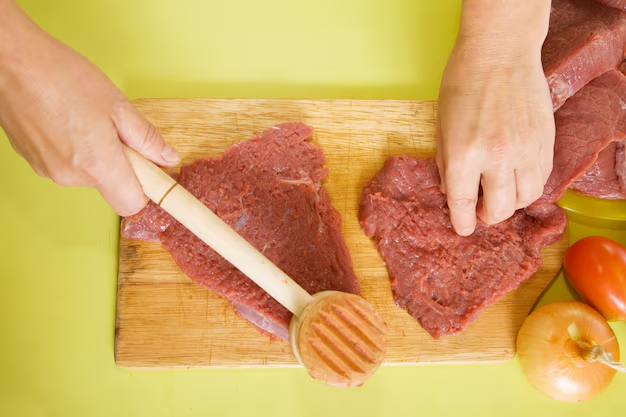Mastering the Art of Aging Beef in Your Refrigerator: A Step-by-Step Guide
Beef lovers, have you ever savored a steak so flavorful and tender that it seemed to melt in your mouth? What if you could recreate that exquisite experience right at home, from your own refrigerator? Aging beef isn't just for culinary professionals; with the right knowledge, you can beautifully age your beef to enhance its texture and taste. Let’s dive into the world of home beef aging with confidence and finesse.
Understanding the Science Behind Beef Aging
Aging beef refers to the process of storing beef under specific conditions to encourage natural enzymes to break down muscle fibers. This not only tenderizes the meat but also deepens its flavor. Two main methods exist: wet aging and dry aging.
Wet Aging
Wet aging involves vacuum-sealing beef cuts in plastic and letting them sit refrigerated. This method is less complex and helps preserve meat juices, making the beef juicy and tender. Wet-aged beef tends to have a milder flavor compared to its dry-aged counterpart.
Dry Aging
Dry aging consists of exposing unwrapped beef in a controlled, chilled environment, allowing air to circulate. This dehydration process intensifies the meat flavor and tenderizes the beef fibers. The outside layer forms a crust which is trimmed off before cooking, revealing exquisitely flavored beef.
Why Age Beef at Home?
You might wonder why you should age beef at home when you can simply purchase aged beef. The reason is control over the process. Aging beef at home allows you to experiment with taste and tenderness intensity while potentially saving money. Most importantly, you achieve a bespoke taste experience tailored to your preferences.
Essential Tools for Home Beef Aging
Before embarking on this culinary adventure, gathering the right tools and understanding safe practices is paramount. Here's what you'll need:
- A separate refrigerator or dedicated space: Aging requires a consistent temperature that might not suit your daily fridge items.
- Wire rack: Elevates the beef, ensuring even airflow around the cut.
- Sheet pan: Catches any drippings, maintaining cleanliness.
- Meat thermometer: Monitors both beef temperature and the fridge environment.
- Clean towels: Used to pat the beef dry, reducing the risk of spoilage.
- Sharp knife: For trimming any dried-out layers after aging.
Step-By-Step Guide to Aging Beef in Your Refrigerator
Achieving the perfect aged beef at home comes down to precision and patience. Let’s break down the process.
Preparing the Beef
Select the Right Cut: Opt for large cuts like rib-eye, sirloin, or strip loin with a significant fat cap. These cuts age well and maintain moisture levels.
Ensure Freshness: The fresher the meat, the better. Check for deep red color and no off odors.
Pat Dry: Use clean towels to remove surface moisture. This step is crucial in promoting dehydration and reducing spoilage risks.
Setting Up the Environment
Temperature Control: Maintain your fridge at a consistent temperature between 34°F to 38°F (1°C to 3°C). Fluctuations can encourage spoilage.
Humidity Level: Aim for 80% humidity. Too low, and the meat dries out excessively; too high, and you risk bacterial growth.
Air Circulation: Place the beef on a wire rack above a sheet pan to allow airflow and collect drippings.
The Aging Process
3 to 5 Weeks for Mild Aging: At this point, you’ll achieve a more tender, slightly more flavorful beef.
6 to 8 Weeks for Intensity: For considerable flavor concentration and further tenderness, extend the process.
Check Regularly: Ensure that the beef remains dry (not sticky or damp) and free from off odors. Occasionally check the thermometer for consistent conditions.
Finishing Touches
Trimming: Once the desired aging time is complete, use a sharp knife to trim off the outer crust, which may be tough or discolored.
Storage: If not using immediately, re-wrap tightly or vacuum seal and refrigerate to preserve freshness.
Enhancing Your Aged Beef Experience
Once the beef is aged and ready, the cooking method becomes crucial to extract the best flavors.
Cooking Basics
- Room Temperature: Before cooking, allow beef to sit at room temperature for even cooking.
- Seasoning: Simplicity is key! Salt and pepper can suffuse flavors beautifully developed during aging.
Safety Considerations
Aging beef at home safely requires careful attention to food safety guidelines.
Key Safety Tips
- Consistent Temperature: Prevent spoilage by keeping a stable refrigerator temperature.
- Clean Tools and Surfaces: Use sanitized equipment to reduce bacteria risks.
- Regular Inspection: Make habit of routinely checking beef for signs of spoilage such as unusual odors or slime.
FAQ: Home Beef Aging
How can I tell if my beef is aging correctly?
Ensure the fragrance is subtly beefy and sweet, without sour or ammonia-like smells.
Can I age individual steaks?
It's recommended to age larger roasts as smaller pieces tend to over-dry and spoil quickly.
What if my fridge has slight temperature fluctuations?
Counter minor fluctuations with strategic fridge placement away from doors or drafts.
Quick Recap: Key Tips for Aging Beef
Here’s a concise collection of practical tips:
- 🥩 Choose large cuts for effective aging.
- 🌡️ Maintain consistent temperatures between 34°F to 38°F.
- 🌬️ Ensure proper air circulation with an elevated wire rack.
- ⏳ Opt for 3-5 weeks for mild aging and 6-8 for intensity.
- 🧼 Test regularly for off odors or sticky textures.
Final Insights
Aging beef in your refrigerator offers an accessible gateway to culinary excellence—one that enhances flavor, texture, and the pure pleasure of savoring beef. By understanding the essentials, prioritizing safety, and embracing patience, you transcend from home cook to epicure. May your home-aged beef endeavors be rewarding and delicious!
